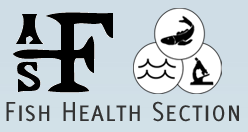About
History and Function of the FHS
The Fish Health Section was the first Section of the AFS and was established in 1972. The Section was created by a small nucleus of fish health professionals comprising a steering committee that included; Jim Warren (Chair), Ron Goede, Chuck Hicks, Bob Summerfelt, Dave McDaniel, Pete Bullock, Roger Herman, Bill Klontz, Bill Wingfield and John Plumb. Dr. John Fryer was the first FHS President with President-Elect Dr. Pete Bullock and Mr. Jim Warren as Secretary-Treasurer. The name, Fish Health Section, was decided upon and established in the Constitution and Bylaws of the parent Society. From this auspicious beginning, the FHS has become a permanent subunit of the AFS. Please click here to view a list of all Past Presidents of the FHS (1972-2019).
Below are links to articles describing important moments in the FHS’s history:
- Fish Health Section: the First Five Years (1973-1977) and a Little Before That
- The History of the Fish Health Section’s Certification Programs for Fish Health Professionals
- Let Us Not Forget “DOC” Stanislas F. Snieszko (1902-1984)
- Finfish Health in the United States (1609-1969): Historical Perspective, Pioneering Researchers and Fish Health Workers, and Annotated Bibliography
Objectives of the FHS
The objectives of the FHS are as outlined in the Section Bylaws and described here.
- To maintain an association of persons involved in safe-guarding the health of aquatic animals.
- To focus attention on aquatic animal health problems by making available to the public appropriate news items, results of completed research and other educational information.
- To stimulate the application of effective aquatic animal health practices by communicating with those entities interested in developing sound aquatic animal health programs.
The FHS would accomplish these objectives in the following manner.
- By making information and technical materials on aquatic animal health available to Section members and other interested parties within publications and information outlets such as the Section Listserv and the technical Journal of Aquatic Animal Health.
- By submitting to the officers of the parent Society an annual report on the status of the Section and recommendations for Society action as appropriate.
- By promoting the development and use of standardized, reliable techniques for detection, diagnosis and management of certain diseases of aquatic animals.
- By developing and maintaining professional standards, certification procedures and a peer review system to ensure professional competence and ethical practices.

